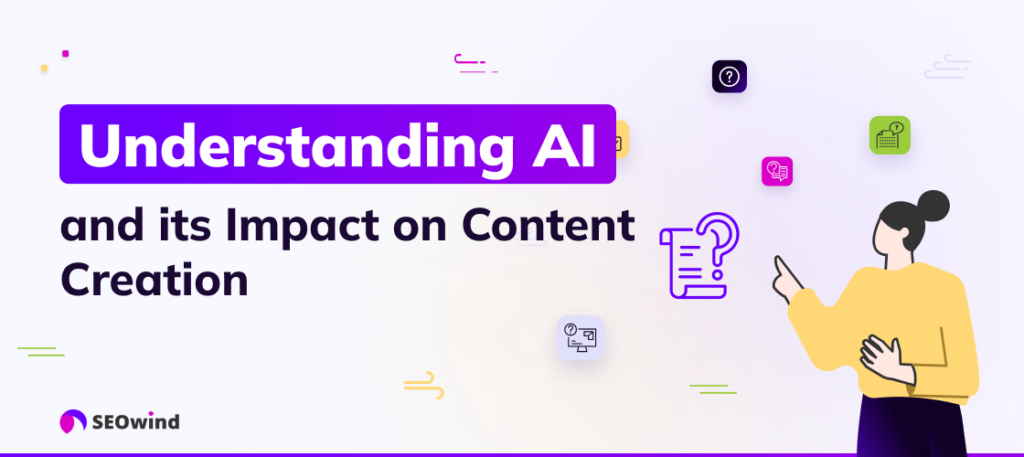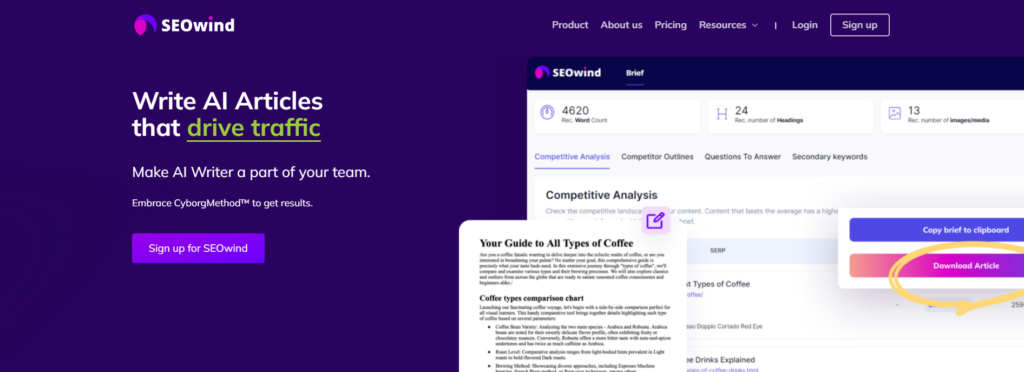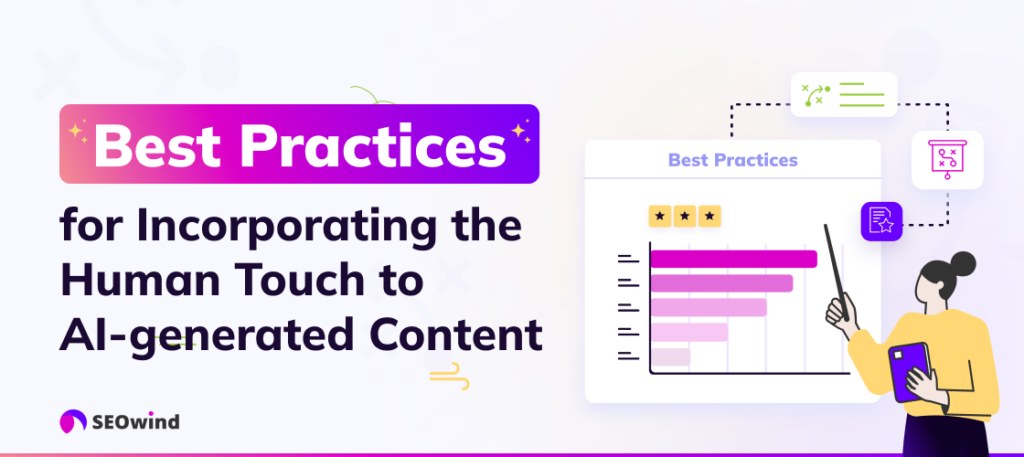Welcome to the phenomenal world of Artificial Intelligence (AI), where machine learning disrupts traditional norms, influences industries, and redefines roles. Now, think about AI long-form content! Can machines truly replace humans in generating engaging and compelling narratives? And how exactly does this impact blogging, one of the fields in which AI has the most significant impact? Let’s explore these questions and peer into the future of automated, long-form writing.
Understanding AI and its Impact on Content Creation

When coming face-to-face with the term “long-form AI content,” you may wonder what it implies. At its core, long-form AI content refers to expansive content crafted by specialized, technology-based tools powered by sophisticated algorithms. Unlike conventional, shorter materials or snippets often seen on social media platforms, these encompass comprehensive information spread over an extended word count, ideally exceeding 1200 words.
Over time, Artificial Intelligence has charted a significant evolutionary journey in the content creation domain. Initially, the earliest software applications could produce basic articles but struggled with coherence and maintaining an engaging tone. Fast-forward to today, and we now have state-of-the-art tools like ChatGPT capable of developing logical pieces exhibiting human-like writing traits.
The impact of AI on content creation has been substantial, with 67% of small business owners and marketers now using AI for content marketing or SEO (Semrush, 2024). This widespread adoption highlights the growing recognition of AI’s potential in the field.
Using Artificial Intelligence in content creation promises substantial benefits. To begin with:
- It saves considerable time as writing lengthy blog posts becomes notably faster.
- These advanced tools are typically cost-effective compared to hiring professional writers.
- There’s minimal risk of writer’s block. Your AI assistant will always be ready with fresh ideas.
In fact, 79% of businesses report an increase in content quality thanks to AI (Semrush, 2024), demonstrating the positive impact of these tools on content creation.
While these merits make it tempting for one to rely on this burgeoning technology entirely, some particular challenges and limitations warrant attention before blindly embracing an all-AI approach:
- Dense subjects requiring deep comprehension can still challenge most software applications.
- Emotional nuances integral to storytelling are challenging to achieve in AI-generated content.
Artificial Intelligence has undoubtedly marked its territory in the blogging industry. It’s a potential goldmine, but also not devoid of obstacles.
AI’s Ability to Generate Long-Form Content
Now that we’ve established AI and its role in content creation, a pressing question arises: Can artificial intelligence tools generate long-form content?
Most certainly, the answer is yes. AI has proven quite capable of producing long-form material like extended blog posts, research reports, and detailed articles – essentially anything you would expect a skilled human writer to create.
This capability is reflected in the fact that 54% of people think AI can improve long-form content (Source: Forbes Advisor, 2023), indicating a growing confidence in AI’s ability to handle more complex writing tasks.
Now, don’t get me wrong. The idea isn’t to diminish or disregard the importance of a seasoned human writer. Instead, I want to underline how far Artificial Intelligence and machine learning have come in mimicking a skill as creative as writing.
Guidance and Limitations of AI in Writing
The ability of an AI tool to write doesn’t spring out of thin air but requires proper instruction and guidance. You’ll need to feed the system-specific guidance, such as the length of your content, keywords to include, tone requirements, and examples of your desired style.
However, current AI writing assistants cannot perfectly simulate human-like creativity or understand context as deeply as humans do instinctively. So, while they can undoubtedly draft out entire pages worth of words, manually reviewing the output can add that organic touch that only humans can contribute at this point.
This is why 93% of marketers use various methods to review AI-generated content before posting (Semrush, 2024), ensuring the final product meets their quality standards.
So, AI certainly can produce long-form content. As with most technology-based solutions, there will always be room for improvement and growth.
Exploring Different AI Writing Tools for Long-Form Content

AI tools are at our service now, catering to all genres of written content. Let’s explore some prominent AI writing tools designed to craft compelling long-form content.
SEOwind: A Long-Form Content based on SEO and Content Research

SEOwind is a great ally in creating SEO-optimized, long-form content. This tool generates coherent articles and prioritizes your keyword allocation, spicing up the SEO flavor in the written material. With its ability to perform expansive content research, SEOwind paves the way for highly relevant pieces that resonate with what readers search online.
Unlike any other writing tool, SEOwind delivers AI content that is well-researched, data-rich, E-E-A-T compliant, and ranks.
SEOwind articles are:
- Well-researched
- Data-riched
- Packed with relevant stats and quotes
- Aligned with your brand voice
- Enhanced with your insights
- Integrated with internal links

LongShot: A Game-Changing AI Writing Tool for Long-Form Content
Next, we have LongShot, an AI tool tailored for long-form writer needs. This game-changing tool helps you avoid manual hassle by providing thoughtfully structured drafts, saving you significant time and energy. In particular, LongShot has a knack for generating comprehensive ideas around specified keywords and themes—the ultimate win-win solution for bloggers dealing with complex topics.
Writesonic: How it Helps Generate Engaging Long-Form Content
Suppose you want to engage audience interest through quality content enriched with emotion and relatability. Writesonic might turn out to be your ideal AI companion. Engineered to harmonize human creativity with machine efficiency, Writesonic can dish out captivating blog posts and articles without missing that all-important human touch. Remember, a tool that can maintain a conversational tone while catering to specific writing styles is often the key to successful content production.
Scalenut: Leveraging AI to Streamline Your Long-Form Content Creation Process
Finally, let’s turn our attention to Scalenut, the ultimate blessing for those seeking to streamline their long-form content creation process. With impressive features like real-time collaboration, advanced storyboarding, and structured workflow management, Scalenut ensures you stay organized while meeting tight deadlines without compromising quality or flavor.
Each tool has unique attributes that can be helpful depending on your specific needs. Ultimately, the goal is to make significant strides in efficiency when tackling the demanding tasks of generating engaging and coherent long-form content using AI.
How to Effectively Use an AI Writing Assistant for Long-Form Content

Integrating AI into the content production process requires striking a balance; it demands a blend of human creativity and machine precision. To effectively use an AI writing assistant for long-form content, follow this four-step approach to pave the way forward.
Step 1: Defining the Purpose and Goals of Your Long-Form Content
In many ways, remarkable content parallels a great story, with both calling for a clear purpose and well-defined goals. So, how can we apply this to AI long-form content? The first step is defining what you hope to achieve through your written material.
Whether you’re penning down extensive guides, in-depth reviews, or thorough case studies, make sure that you identify measurable objectives. Are you looking to drive organic website traffic? Or maybe enhance brand awareness? Or even stimulate meaningful engagement among readers? This initial decision sets the foundation upon which your entire narrative will rest. It creates a sense of direction for whichever AI writing tools you employ.
Step 2: Conducting Thorough Research for Relevant and Accurate Information
The second step involves gathering all the relevant details needed to discuss your topic adequately. Even though today’s innovative AI writing assistants like Writesonic and Clevopy.AI are skilled at mimicking human-like narratives, these tools heavily rely on structured data inputs.
Engaging in meticulous research will lend much-needed context and depth to your write-ups. Keep up-to-date records of reliable sources from which you can extract information. Endeavor to incorporate the latest statistics, interesting anecdotes, or facts pertinent to your subject matter that could act as potent material when inputted into these AI long-form content creators.
Step 3: Crafting an Outline to Structure Your Long-Form Content
An optimal structure acts as the backbone of any great piece of writing. It introduces clarity by organizing thoughts methodically while helping build coherent arguments or conclusions. And this is precisely where our third step enters the picture: creating a detailed outline for your content.
Though AI tools can write, currently, they lack the innate human ability to think critically and sequentially map out ideas. As such, by fleshing out an outline complete with headers, sub-headers, and bullet points, you set a clear path for your AI tool to follow and produce vibrant narratives closely aligning with the intent of each section in your long-form content.
Step 4: Generating High-Quality, SEO-Optimized Content with an AI Writing Assistant
Finally, armed with clear objectives, rich research data, and a comprehensive outline, your chosen AI writing assistant is ready for action. Make sure you communicate these inputs effectively to your AI tool.
While inserting keywords, remember that inclusion merely for the sake of checking boxes won’t do any good. Instead, incorporate them organically throughout the content, maintaining an ideal keyword density. Semantic SEO practices and search intent comprehension are beneficial in this regard.
The AI writing assistant synthesizes all inputs while generating high-quality drafts tailored according to your specific requirements. In this way, it produces engaging and SEO-optimized AI long-form content that is ultra-modern yet refreshingly human-like!
Best Practices for Incorporating the Human Touch to AI-generated Content

No matter how advanced it gets, AI-written material will always require a human touch. This essential aspect often goes overlooked when dealing with machine-generated drafts. One can significantly improve the quality by incorporating best practices in polishing and refining this content.
Polishing and Refining AI-generated Drafts to Enhance Quality
The first step towards enhancing the quality of AI-produced drafts is to manually refine them. It’s not enough to simply publish a piece generated by software without any manual review or editing. This process involves adjusting sentence structures, modifying vocabulary, adding personal insight, and ensuring idiomatic alignment.
Let’s explore a few actionable steps you can follow:
- Refine Raw Materials: After generating your draft using an AI tool such as Writesonic or LongShot, go through it carefully. Look out for abrupt sentences or randomly picked words that don’t fit the context.
- Add Personal Inputs: Here’s where my years of writing experience come into play. I like to add anecdotes from my life or insightful examples relevant to the article’s topic.
- Ensure Idiomatic Alignment: Unless your target audience is vast and global, choosing regional idioms may boost the relatability of your content.
Remember! The more effort you invest in refining your draft, the greater the dividends in attracting and retaining readership.
This approach aligns with the CyborgMethod™ I advocate for, which combines the best of both human and AI capabilities. The most effective approach to creating long form content with AI is likely a hybrid model where AI generates initial drafts and outlines, but human writers provide the critical thinking, emotional resonance, and brand voice that truly engages readers.
Human Editing for Grammar, Clarity, and Coherence
AI tools may write engaging content, but they aren’t perfect linguists. While these tools may make fewer grammar errors than beginner writers, better frameworks lead to improved clarity and coherence, which machines can overlook!
There are two significant ways humans can save the day here:
- Proofreading: a must after finishing any writing.
- Looking at coherence and how well the ideas flow.
A poor choice of words or lack of clarity can mar the message you are trying to convey. Remember to be meticulous in grammar-checking and ensure that each sentence logically leads to the next.
Fact-checking and Ensuring Accuracy in Information
Accuracy is critical for AI long-form content. One mistake could turn an informative piece into a collection of falsehoods. As great as AI tools can be, they cannot discern fact from fiction on their own. This makes it exceedingly critical to use reputable sources to cross-reference any statistics or assertions within your draft.
Fact-checking not only safeguards against misinformation but also protects the integrity of your content. Therefore, it should never be skipped under any circumstances! Your readers will thank you for taking this extra step to ensure accuracy.
Successfully using AI tools doesn’t mean letting them do everything on auto-pilot. Incorporating these practices maintains genuine authenticity coupled with human oversight. Happy Writing!
Ethical Considerations in Using AI for Long-Form Content Creation
The swift propulsion of AI-driven long-form content poses some ethical concerns that we shouldn’t overlook. As an industry expert and ethical advocate, I believe in the importance of honest and transparent practices regarding technology utilization, particularly in blogging. Now, let’s untangle these ethical considerations one by one.
The Role of Transparency in Disclosing AI-generated Content
Transparency revolves around being open about the use of AI in crafting your content. It is vital for creating a trustworthy reader-writer relationship. When you utilize an AI that will write for you, don’t disguise it; openly explain how you’ve reached that point.
Therefore:
- Clearly disclose any AI assistance used
- Consistently update readers on potential shifts from human to machine-authored content
- Ensure there’s explicit differentiation between human-written and AI-driven sections.
Respecting your readers’ intelligence upholds ethical values and allows them to knowingly engage with what they’re reading.
Evaluating the Legal and Ethical Implications of AI-generated Content
AI creating long-form or short-form content poses unique legal questions concerning intellectual property rights (who owns this content?), privacy matters (what data was used or sourced by the algorithm?), and accountability (if misinformation spreads via AI-produced work, who’s culpable?).
Besides grappling with such legal predicaments, consider:
- Actively avoiding the promotion of misleading or biased information.
- Ensuring respect for data privacy.
- Explicitly following responsible technology protocols dictated by global IT governance bodies.
Navigating through legal hoops can be daunting, but engaging with them responsibly mitigates risks associated with creative applications powered by Artificial Intelligence.
Maintaining Human Oversight and Responsibility in the Use of AI Writing Assistants
Handing over the content creation reins entirely to AI is not advisable. Remember the old saying, “Machines don’t make mistakes, humans do”? Think about it: AI writing tools learn from human-provided datasets.
So, we still need to:
- Ensure close-knit cooperation with these digital aids.
- Be prepared to step in and rectify or customize content as required.
- Fact-check information generated by your AI long-form content companion.
The bottom line is not to allow AI tools to operate unattended! Such vigilance helps maintain quality and coherence in line with reader expectations.
Jointly blending human creativity with automated proficiency will create insightful, engaging stories told at scale while ensuring no ethical stone is left unturned. Let that sink in as we embrace the promising future of blogging, helmed by advanced algorithms but captained decisively by good ol’ Homo Sapiens.
The Future of AI in Long-Form Content Creation
When we look to the horizon, we find an optimistic vision full of promise and potential. This foreseeable future, which isn’t that far away, is brimming with AI-enhanced opportunities set to reshape the blogging industry.
Predictions and Trends in AI-driven Content Creation
Creating engaging long-form content has been challenging for many writers. Numerous challenges exist, whether striking a balance between information density and readability or grappling with time constraints. But fret not! With the noteworthy advancements in Artificial Intelligence (AI), those days will soon be behind us.
One major prediction is an exponential rise in adopting AI-powered writing tools, primarily because they’re designed to shoulder these burdens for you. For instance, data analysis trends indicate that AI can aggregate and distill voluminous data much faster than humans, enabling writers to deliver pertinent insights quickly.
AI-driven personalization is another critical trend in this field. You should tailor every piece of written content to correspond to specific consumer preferences. It’s much like your barista knows how frothy you want your coffee! This highlights how intelligently AI can write for you.
And we can’t forget about SEO optimization, involving keyword placement strategies and understanding search engine algorithms, all of which can be handled by your new digital companions!
The Impact of AI on Freelance Writers and Content Creation Jobs
As more organizations leverage AI-generated long-form content, what does this mean for freelance writers? Should we be afraid?
It’s all about perspective! While some writing tasks might become automated, creative storytelling and everything humans bring into play, such as nuances, subtlety, and empathy, are areas where humans have the upper hand.
As AI writing tools become more sophisticated, content creators must evolve their skills to focus on higher-level strategy, editorial oversight, and creative direction. The future belongs to those who can effectively leverage AI to augment their capabilities, not those who try to compete with it directly.
Exploring the Boundaries between Human and AI-generated Content
Undoubtedly, AI has come a long way in creating articulate text. But certain firmly etched boundaries still delineate human writers from AI that will write for you.
Narrative structuring, humor incision, or invoking emotion are areas imbued with an innate humanistic quality that extensively depends on unplanned inspiration and spontaneity. Despite the massive leaps forward in recent years, we must remember that technology is a tool, not the craftsman itself!
That said, this boundary is beginning to blur as advancements continue—a fascinating spectacle to observe!
Opportunities for Collaboration Between Humans and AI in Long-Form Content Creation
The union of human intellect and algorithmic efficiency offers infinite potential for innovative content creation. The idea is not about replacing humans but facilitating collaboration to best use each other’s strengths.
With routine tasks such as research or SEO optimization handled by our digital assistants, an array of new avenues open up for the creative mind! Writers have more time to focus on honing their narrative techniques or expanding thematic horizons tailored uniquely to readers’ inclinations.


